When Phoenix Russell opens the back gate to her Honda Pilot, it’s clear that this SUV is not just for transportation.
Inside a webbed fishing rack hangs suspended from the ceiling, and a black duffel bag filled with horseback riding gear sits next to a bottle of massage oil for horses. There is a metal box with jewelry making tools and spools of silver in it, a big green case that holds a new Mathews Chill SDX hunting bow for women (it is camouflage with pink accents), cans of Buck Bomb Doe in Estrus to draw the bucks in, and a large plastic tote filled with special Scent-Lok camouflage clothing for hunting deer.
“It is designed to mask any human odors so the deer can’t smell you,” Phoenix says. “I keep it in plastic to prevent any unnecessary or extra human smells from getting on it. At this time of the year, I don’t use soap, lotion or even deodorant. I tried the Scent Killer shampoo, but that stuff doesn’t just kill the scent, it also kills your hair.”
Phoenix grabs a handful of her long blonde hair and looks at it. “I’m not going to ruin my hair.”
It’s still early in the morning and Phoenix has decided to spend the first part of the day combing one of her favorite beaches to collect conch and clam shells to make jewelry. As she walks along the mist-covered beach dressed in tight jeans, boots and a vest, with her blonde hair streaming down her back, it is hard to believe that this young woman is an avid fisherwoman who also spends most of her fall mornings and evenings sitting in a deer stand. Only her broad shoulders suggest that she could drag a several hundred pound buck out of the woods.
Phoenix picks up a conch shell and makes a face.
“I will gut a deer, but I don’t do snails.” She drops the live conch and looks for empty shells. She sees deer tracks, listens to the hum and chatter of several scallop boats that are just offshore, admires rocks and a peregrine falcon flying in the air, and then finds a stunning chipped purple and orange scallop shell. She continues searching the beach until she is satisfied that she has enough raw material to make jewelry for the upcoming holiday season.
About six years ago, Phoenix wanted to learn how to make jewelry with wampum so she began to play around with different tools and shells. “I am completely self-taught. What I know about carving and shaping wampum is totally from trial and error. But that’s the way I am. That’s the way I learn.”
When Phoenix was in high school, she contracted a debilitating parasite and switched from the Martha’s Vineyard Regional High School to the now defunct Rebecca Amos Institute.
“I was sick for nearly four years, throwing up every day. The Institute was mostly for punks, but I needed to be able to take class and then go home and rest. I was misdiagnosed by so many doctors so many times. My gallbladder was even removed unnecessarily. But I finally found Jonathan Glass, a naturopath in Concord, who identified the parasite as liver flukes and basically saved my life, treating me with vitamins and acupuncture. I got better and was able to graduate from school early. I knew what I wanted to do: work with animals. While the other kids were walking the stage in May, I had already travelled across the country on a train and studied structural integration for horses in Washington state. I started riding when I was young. Horses have always been a part of my life.”
She pauses. “I loved that program. We sat on skins on the floor. Doing is the best way for me to learn.”
Back at the car, Phoenix plunks her bag of shells in the backseat, away from the other gear.
“I don’t want the fish smell near the camo.”
Next stop — The Red Pony horse farm. Although making jewelry is Phoenix’s main source of income, she spends two days a week working on horses and people’s bodies.
“After working with horses for a few years, I got certified to also work with people. I only do structural integration twice a week because I love it and I don’t want it to become work.”
Phoenix’s first session today is with a horse named Betty, but first she has a riding lesson.
“I’m really lucky that Karen is letting me work with Pip.” Pip is Red Pony horse farm owner Karen Magid’s prized Dutch warm blood, a fancy yet injured dressage horse. As Phoenix walks into the barn, she greets horses and people alike and then stops in front of Pip’s stall. She dons her riding boots, slides half chaps over her jeans, braids her hair and then gets down to the business of grooming and tacking up Pip.
At first Pip seems reluctantly resigned to the process, but then perks up as Phoenix talks to him. When she is done, they move into the ring. Karen arrives a few minutes later and they look at the horse’s gait, evaluating its progress. Jessica Benjamin, Red Pony’s barn manager and trainer, also weighs in. They still see a bit of stiffness in Pip’s injured leg.
Phoenix climbs on and begins walking the horse around the ring as Karen yells out suggestions. “Cuddle rather than clamp your legs.”
“He seems heavy in his body today,” Phoenix remarks.
“Long legs. Heels down. Get him round. Don’t try so hard,” Karen says.
They go back and forth like this for about 40 minutes. As Phoenix slides off Pip’s back, she says, “Whew, my legs are already sore.” Karen laughs. “How can a girl as strong as you be sore?”
“You working on Betty today?” Karen adds. Phoenix nods yes.
Betty is a big black Friesian Percheron cross that was originally purchased by Rising Tide for therapeutic purposes. But when the horse arrived on the Island, she was lame. Fortunately for Betty, a woman fell in love with her, bought her and hired Phoenix to help with Betty’s rehabilitation process. This is Phoenix’s fifth structural integrative session with Betty.
“I usually begin with five sessions and then see where we are. Betty is responding to the work, so I think we’ll continue.”
Phoenix puts some massage oil on her wrists. She uses this particular scent as a tool to signal to the horses she works with that she is there to massage rather than ride.
“I always tell a horse that is injured, I understand you are in pain,” she adds. “I never tell an animal that they are bad. Nor do I expect them to be bad. And as a result, I’ve never had an animal behave badly towards me.”
Phoenix hooks Betty up to some cross ties and begins massaging the horse. “I never brush a horse out before I work because it desensitizes them,” she says.
Phoenix digs her fingers into Betty’s left front shoulder, then slides her hand under the horse’s left scapula. Halfway through the session, the horse’s jaw loosens and its eye lids are half closed. “This is what the relaxation response looks like in horses.”
As Phoenix moves to work on Betty’s hind quarters, she climbs onto a step stool to reach her back. After about an hour and 20 minutes of pressing, kneading and working through Betty’s entire fascial structure, Phoenix steps off her stool and sighs.
“All done mare. Good job.”
Walking back to her car, Phoenix texts Betty’s owner, telling her about the session, what she observed and worked on, and when she thinks Betty will be ready to be ridden again.
“It is very intense for a horse to be touched that much,” Phoenix says. “It is important to give the horse time to settle.”
Before getting lunch, Phoenix stops at the Vineyard Haven Post Office to mail off a wampum anchor charm to an off-Island customer. Then she drives to the Black Dog for some lentil soup before she heading into the woods to sit in her stand.
Two years ago during derby season, Phoenix posted on Facebook that she wanted someone to take her fishing. She used to fish with her dad and missed it. An old friend from high school, Joseph Rogers, replied. Then hunting season began and Phoenix told Joe that she was also thinking about learning to hunt, but she wasn’t sure. After sharing a few rudimentary skills with her, Joe set up a second stand in one of his trees and let Phoenix join him. She sat for a whole season, observing and feeling it out.
“I really wanted to be sure that I was okay with it,” she says.
Phoenix took her evaluation of hunting very seriously. Although she was comfortable teaching herself how to craft wampum, she knew she needed expert advice to become a skilled and responsible hunter. In addition to Joe, she talked to and spent time with several respected local hunters. “We watched hunts on the Outdoor Channel and I learned a lot.”
She also read hunting magazines, studied how deer browse, learned how to track does and bucks, how to read the ground scrapes made from their antlers and follow doe runs. She also learned how to use a deer grunt.
“I sat on my porch for a day and practiced until I got the sound right.”
She decided to focus on bow hunting so that “I could shoot to harvest an animal in an ethical manner. The goal is to be able to aim and shoot through both lungs and the heart. I don’t take a shot unless I am certain that I can hit at least one lung and the heart. I wanted to harvest a deer with a bow first. It felt like if I couldn’t do it that way, then I didn’t have a right to use another weapon. Using a bow is not easy. I now pull about 52 pounds. After three pulls my shots become less accurate and I have to stop for the day.”
Last year, Phoenix sat in a stand by herself for the first time and began hunting in earnest. “The first time I harvested a deer, I was shaking so hard that I could barely text Joe and all of my mentors to tell them. Hunting is such an amazing experience. You sit, listen and wait for hours. You watch raccoons, birds, bats, skunks and squirrels move around. And then after all this peace and stillness, there’s the moment when you see a deer and know it is time for you to take a shot. It is so intense. Every time I release my bow, I feel like I am going to cough up my heart.”
She pauses for a moment and adds, “And I always thank the animal.”
Phoenix drives to one of her stands, which is on land bank property in Chilmark. She pulls in, opens up the Honda’s back gate, and pulls out and puts on her camouflage — first long underwear and then a second layer. She tucks her hair under a hat and inside a neck gator, noting, “If you see pictures of girls hunting with their hair out, they are not really hunting.” Then she takes her earrings off.
“I don’t want the bow to catch my ear and rip my earring or ear off.”
When she’s dressed, she sprays some Scent Killer on her boots to erase the human smell and pulls her bow out of its case. She is ready and texts Joe to tell him she’s heading in.
“We have a buddy system. We tell each other where we are, when we are going in and when we are out. We are big on safety.”
As she drapes her grunt and sight around her neck, tucking them inside her shirt, a truck pulls up and a young man gets out and greets Phoenix. “I’ve never seen anyone else here,” he says.
Phoenix asks him who he is and he tells her. She laughs. “Oh, you’re Seth Harlow. I’ve asked around about you, but no one knew who you were.”
They discuss stand sites and Phoenix says, “I think we are hunting the same deer.”
And with that, she heads down a path to her stand. Seth watches her go. “Well, she seems to have her stuff pretty squared away,” he says.
Three hours later, Phoenix walks out of the woods. It is 5 p.m. and nearly pitch black outside.
“I saw one,” she says. “That’s good enough for me for today.”
As she strips off her gear, she reflects. “People ask me, you’re 25, aren’t you going to go anywhere? Aren’t you going to try living somewhere else? But there is so much for me here. This Island gives me so much. I am so happy to be here.”
On the Trail of Phoenix Russell
Profession: Wampum jeweler, structural integration therapist for horses and people, hunter, fisherwoman.
Age: 25.
Born: Oak Bluffs.
Family: Randi Lee Hadley, mother; Bill Russell, father; Raleigh Russell Jones, sister, Lyla James Hadley Jones, niece.
Education: Equine Natural Movement School for Professional Training, Costa Rica School of Massage Therapy.
Lives with: Andrea Rogers, Gloria Bellusci, Jamie Rogers, Joseph Rogers.
Deer harvested with boyfriend Joseph Rogers last year: 14.
Pets: Penny, “The sweetest pit bull ever. I call her house cat.” And Indy, “A mutt from Puerto Rico.”


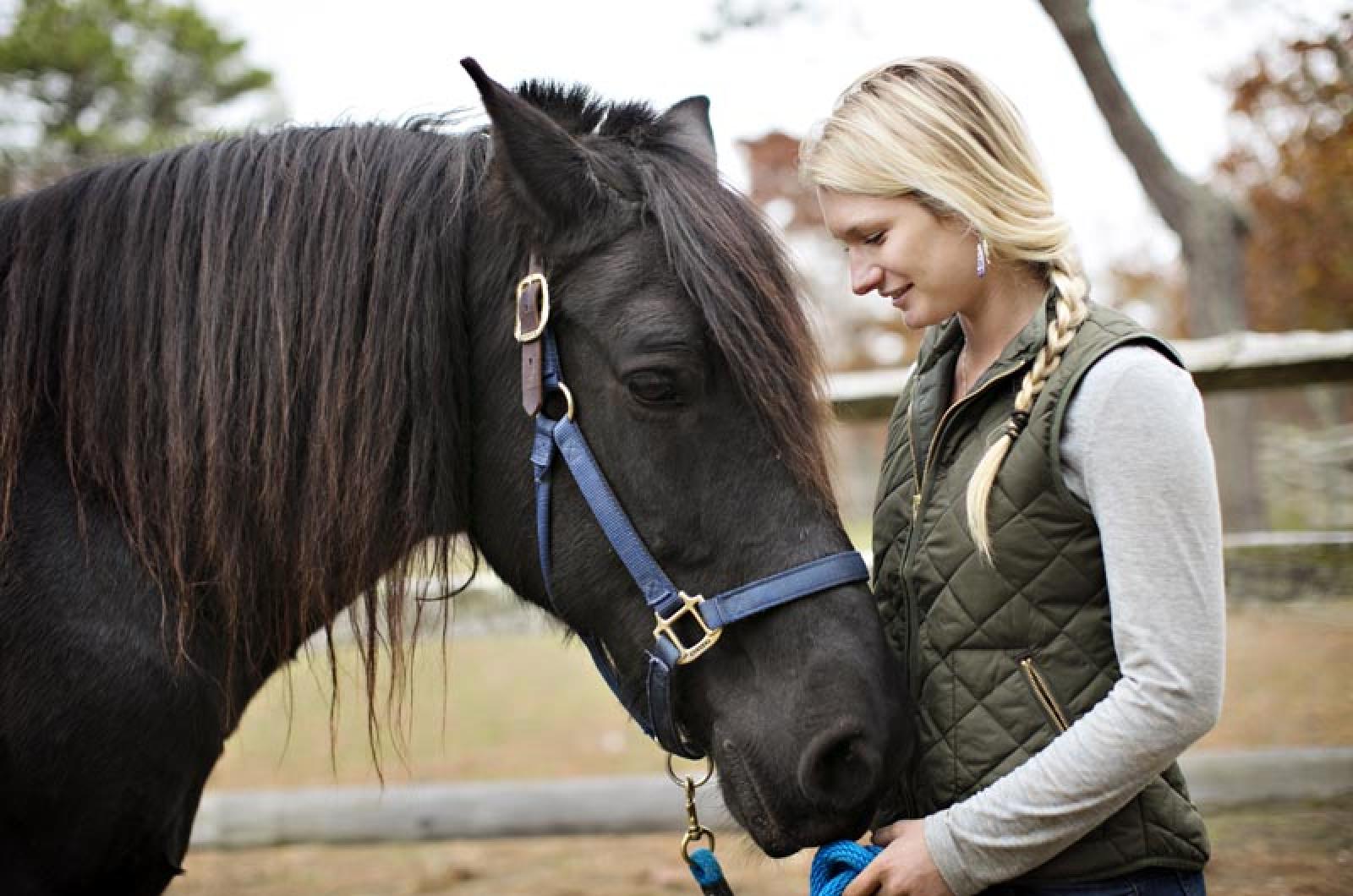
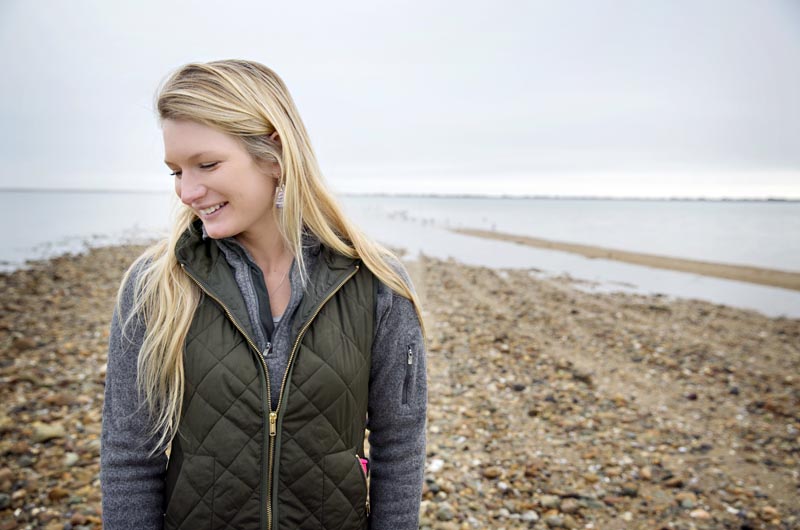
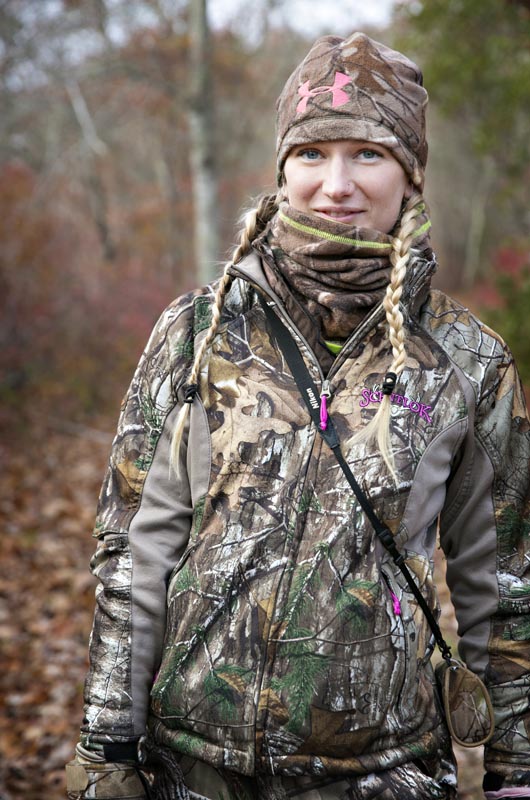
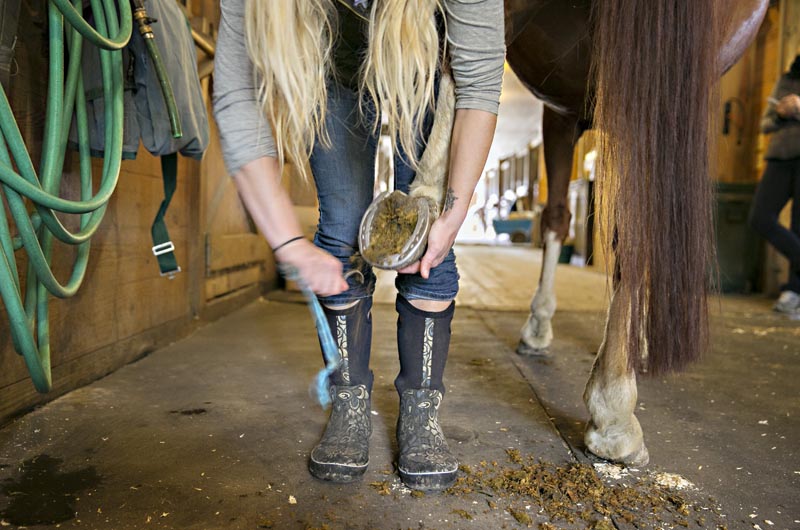
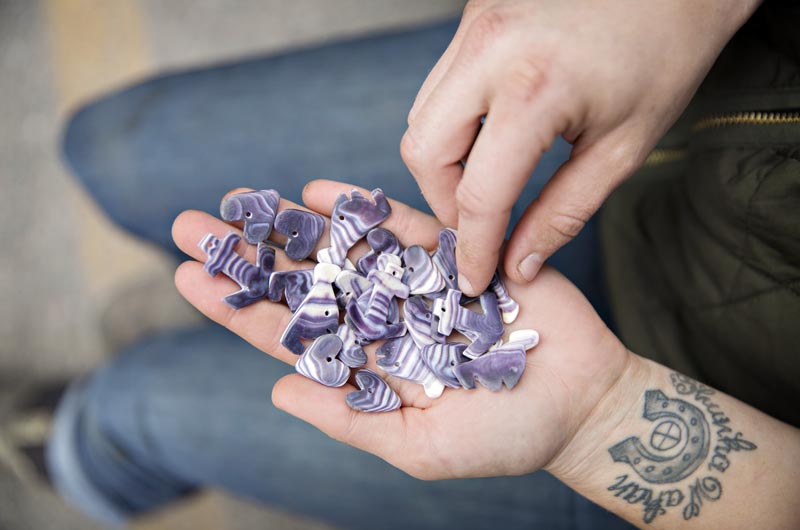
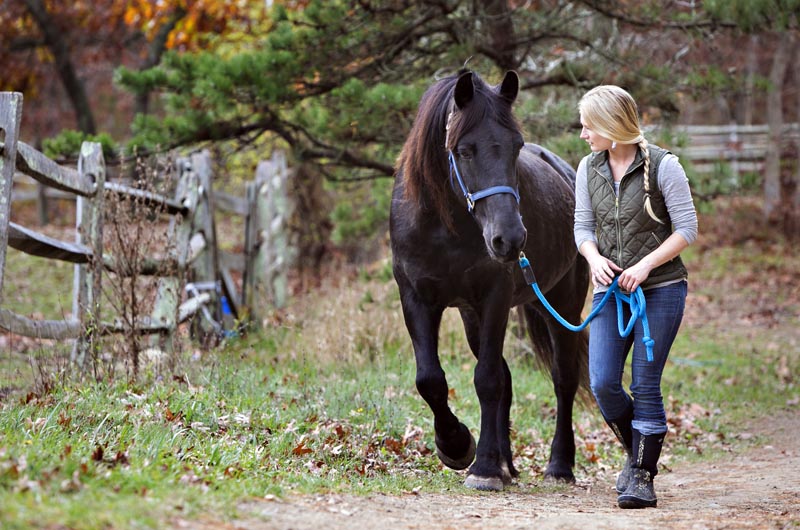
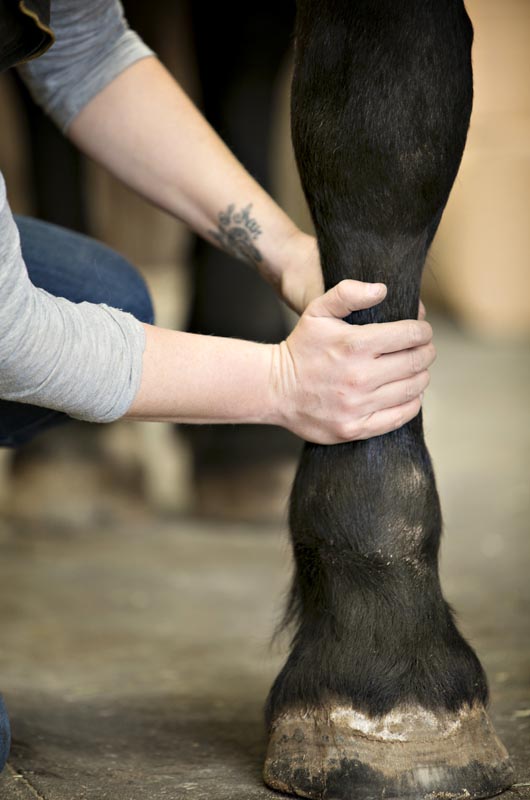





Comments (2)
Comments
Comment policy »